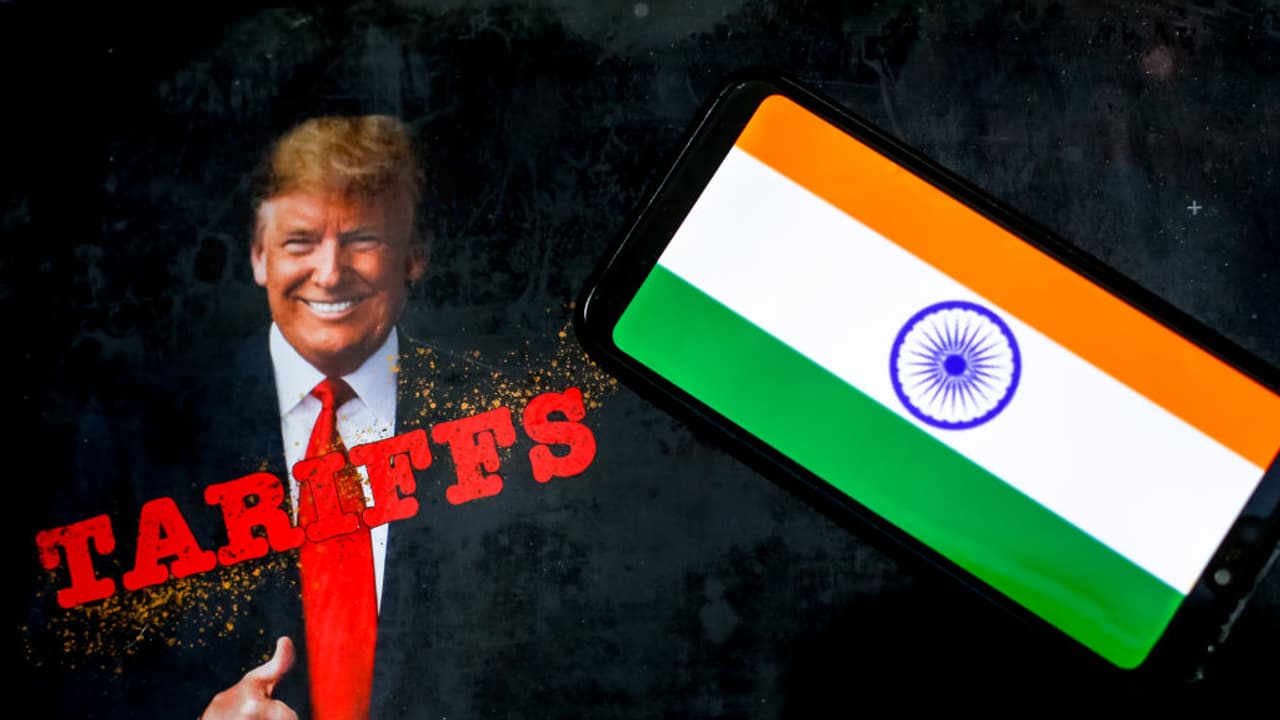The US will impose a steep 50% tariff on Indian goods from August 27, hitting exports worth $60.2 bn. Sectors like textiles, shrimp, gems & jewellery face job losses, with experts warning of a 43% plunge in shipments to America.
The United States has announced that starting August 27, 2025, all Indian goods entering the American market will face a steep 50 per cent tariff. This move, described by industry officials as “prohibitive,” comes as an extension of the already existing 25 per cent duty. Another 25 per cent has been added as a penalty for India’s purchase of Russian crude oil and military equipment.
The impact is immediate and severe. According to a US notification, “the duties… are effective with respect to products of India that are entered for consumption, or withdrawn from warehouse for consumption, on or after 12:01 am Eastern Daylight Time on August 27, 2025.”
Which Sectors Will Be Worst Affected?
While pharmaceuticals, electronics, and petroleum products are exempt, most labour-intensive industries are staring at massive losses. Shrimp, textiles, apparel, gems & jewellery, leather, carpets, and furniture—sectors that employ millions of workers—will suddenly find their goods uncompetitive in the American market.
Competitors like Bangladesh, Vietnam, Sri Lanka, Cambodia, and Indonesia, which enjoy lower tariffs, are expected to eat into India’s market share.
Mithileshwar Thakur, Secretary General of AEPC, highlighted the devastating blow to textiles:
“The industry was reconciled to the 25 per cent reciprocal tariff announced by the US as it was prepared to absorb a part of the tariff increase. But, the additional burden of another 25 per cent… has effectively driven the Indian apparel industry out of the US market as the gap of 30-31 per cent tariff disadvantage vis-a-vis major competing countries… is well-nigh impossible to bridge.”
Human Cost: Jobs and Livelihoods on the Line
Beyond trade numbers, the tariffs strike at the heart of India’s workforce. Export hubs in Gujarat, Tamil Nadu, Maharashtra, and West Bengal depend heavily on orders from the US.
An official from the leather and footwear sector admitted that layoffs were inevitable:
“Companies would now be compelled to reduce staff and halt production until there is clarity on the proposed bilateral trade agreement (BTA).”
The gems and jewellery industry, which relies on the US as its largest market, fears massive job losses. One exporter bluntly said:
“Job cuts will happen for sure in the jewellery and diamond sectors as the US is our largest market. We need a long-term export strategy to deal with these high tariffs. We need interest subsidy, ease of doing business, timely refund of GST dues and reformed special economic zone law.”
For thousands of small workshops and factory floors, this means uncertainty, delayed wages, and possible closures.
The Numbers Behind the Crisis
India exported USD 86.5 billion worth of goods to the US in FY2025. With the new tariff regime, about 66 per cent of these exports—worth USD 60.2 billion—will now face the 50 per cent levy.
Economic think tank GTRI has painted a grim picture:
“The United States’ new tariff regime, effective August 27, 2025, marks one of the most severe trade shocks India has faced in recent years. With over two-thirds of India’s USD 86.5 billion exports to the US now subject to prohibitive 25-50 per cent duties, critical labour-intensive sectors… face sharp declines in competitiveness and employment.”
Ajay Srivastava, Founder of GTRI, predicted an overall 43 per cent drop in exports to the US in FY2026:
“Exports from these sectors could plunge 70 per cent, dropping to USD 18.6 billion, causing an overall 43 per cent decline in shipments to the US and endangering hundreds of thousands of jobs.”
The Bigger Geopolitical Trigger
This tariff hike is not purely economic—it’s political. President Donald Trump linked the penalties to India’s continued trade in Russian crude oil despite Western sanctions. White House Press Secretary Karoline Leavitt defended the move, saying Trump imposed sanctions to force an end to the Russia-Ukraine conflict.
US Treasury Secretary Scott Bessent went further, accusing India of “profiteering” by reselling Russian oil.
India’s Pushback and The Road Ahead
New Delhi has described the US tariffs as “unjustified and unreasonable.” Officials say India will take all necessary steps to protect its economic security and safeguard jobs. The government has also pinned hopes on a proposed bilateral trade agreement (BTA) with Washington, which aims to double goods and services trade from USD 191 billion to USD 500 billion.
Until then, exporters are scrambling. Some are rushing consignments before the August 27 deadline to avoid the tariff shock. This explains July’s unusually high export numbers—shipments to the US jumped 19.94 per cent that month.
Yet, once the tariffs kick in, survival will be the key challenge.
As Srivastava warned, “Competitors like China, Vietnam, Mexico, Turkey, and even Pakistan, Nepal, Guatemala, and Kenya stand to gain, potentially locking India out of key markets even after tariffs are rolled back.”
